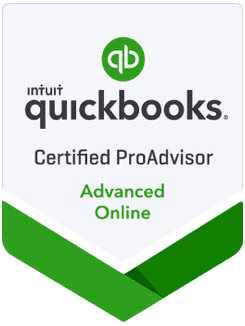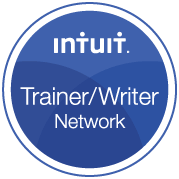 It’s that time of year when business owners get anxious and accountants get busy. We’re all preparing the April tax season!
It’s that time of year when business owners get anxious and accountants get busy. We’re all preparing the April tax season!
If you’ve been keeping good records throughout the year, closing your books should just take a few hours. Then you can pass the file off to your CPA with confidence. If you haven’t been keeping good records… well, we’ll talk about that in a little bit.
Here are seven steps you can take to finish off your QuickBooks bookkeeping and be prepared for the new year.
Each of the seven steps is demonstrated in my 90-minute online class.
See this article in action!
Alicia recently taught a webinar about this very topic, and recorded it so you can see all these techniques in action yourself. See how to reconcile your bank accounts, using all Alicia’s favorite time-saving tips. Listen to actual business owners decide if today’s lunch was tax deductible or not. Watch Alicia run a variety of reports and customize them, including a discovery of which of her services made the most money last year (hint: it wasn’t her most popular ones!).
1. Reconcile your bank accounts.
Reconciling a bank account means comparing the transactions you have to the ones the bank has. Reconcile all your accounts: checking, savings, petty cash, credit cards, PayPal/Square, and loans. Ideally, reconciling should happen at the end of every single month, but completing the December reconciliation is the first step for ending the year.
As an aside, while I believe in “going green” in most areas of my life, I still have the bank send me statements at month’s end. That way I have a reminder to take this action. And, since I need the paper anyway for this process, it’s faster and easier than logging into my bank’s website and printing them out. Plus, I don’t have to pay for paper and ink!
When you receive your bank statement in the mail, go to BANKING > RECONCILE. Enter in the closing date of the statement (which may be different than the end of month), and the ending balance. Check off each matching transaction both on screen and on paper. When you’re done, you should have a $0 difference.
My Year-end QuickBooks Procedures online class includes a practical demonstration of a reconciliation, including some tips and tricks to make it easier!
Reconciling each bank account allows you to locate transactions that were entered twice, and entries the bank has that you don’t. By the time you’re done, all your transactions will be present and accounted for!
2. Make sure your transactions are categorized properly.
Just because your balance matches the bank, it doesn’t mean all the transactions were put in the right places.
Run a Profit and Loss report for Last Year. Click on each of the Income, Expense, and Cost of Goods amounts. Scan the list. Is each transaction supposed to be where it is? If not, click on the entry to open it, and change the category to the correct one. Here are some traps to look out for:
Personal Income and Expenses
Classify these using Equity accounts for Owner Distribution and Owner Contribution. LLCs should use “Member” or “Partner” instead of “Owner.” Corporations should use “Shareholder.”
Meals and Entertainment
Your morning Starbucks and your lunch do NOT count as Meals! Meals and Entertainment is reserved for business meetings, not for keeping you from getting hypoglycemic. If you are talking business with a colleague or client, that’s fine – just make notes on your receipt about who you were with and what you discussed. If you’re using QuickBooks Online, you can take a picture of your receipt and create the transaction on the spot to save data entry time back in the office!
Fuel and Auto Expenses
Your daily commute to work is not a business expense, unless you’re driving a company vehicle to job sites. Instead, fill up your gas tank and pay for your repairs with personal money, and keep a daily log of how many miles you drive every day for what purpose—there’s an app for that! Then talk to your CPA about taking a standard mileage deduction. This deduction is designed to reimburse you for your gas and car maintenance.
3. Take inventory.
If you sell products, this is a perfect time to adjust your inventory. QuickBooks has inventory reports you can print out to see what you’re supposed to have in stock. Take a physical count and compare the quantities. Depending on the version of QuickBooks you’re using, there may be an ADJUST INVENTORY tool to update your quantities. If you’re using QuickBooks Online, you can just enter an adjustment within the product itself, and QuickBooks will update the Inventory Asset valuation for you.
4. Depreciate your assets.
If you have large purchases in your fixed assets, you want to spread out the cost of the items over a few years so that your books don’t have big expense hits one year and nothing the next. Depreciation also adjusts for value reductions – your computer is worth less now than it was five years ago.
Ask your accountant to make these adjustments correctly in your QuickBooks file.
5. Analyze your business.
QuickBooks has somewhere between 20 and 100 reports available to you, depending on what version you’re using. Plus, they’re all customizable!
A general business guideline is the 80/20 rule, a proportion that runs through all your endeavors. 20% of your customers are responsible for 80% of your profit. 20% of your products or services make 80% of your revenue. 20% of your time makes 80% of your income. 20% of your staff does 80% of the work. You get the idea.
Start with your Profit and Loss report and your Balance Sheet. These are the two fundamental reports that show your Income/Expenses, and the state of your assets and liabilities.
Once you’ve perused these two reports, now go through ALL the reports available and look at your business in whole new ways. You’ll be surprised at what you’ll learn.
Once you know what type of customer is your best customer, find more like them next year. Once you know which of your services have the best profit margin, promote those services more. Use this analysis to make solid business decisions that will grow your company next year.
6. Close the books.
After your taxes have been submitted, use the Close the Books feature. Closing the books makes sure that your file matches what you submitted to the IRS. It prevents anyone from changing historical data without knowing what they’re doing.
In Preferences, set the date to 12/31, and put in a password. Now, when you try to change an entry before your current fiscal year, it will ask for a password first. That gives you a moment to make sure it’s a good idea before you do any damage!
7. Make a backup.
Even if you have a solid backup strategy, make a specific backup of your file as a year-end final copy. Label it with that fiscal year and put it in a special folder for collecting these master copies. Maybe burn a copy to a CD and put it in safe deposit box.
If you’re using QuickBooks Online, go to the Gear and choose Export. You must use Internet Explorer on a PC, even though in general Intuit recommends Chrome. Once you have this file, it can be restored to a desktop copy of QuickBooks, or uploaded into a new QuickBooks Online company for reference.
When and Where to Get Help
This is all well and good if you’ve been diligent about entering your sales receipts, invoices, and payments through the year, and recording all your expenses. But what if you haven’t been keeping up?
The short answer is that you have a lot to do. The good news is that most banks will allow you to download your entire list of transactions for the year, so all you have to is classify each one.
The longer answer is that just pulling in your bank feeds, especially for your income, doesn’t give you any detail for analyzing your business. You won’t be able to see what you sold to whom. You won’t be able to do any year-over-year reporting until the following year. If possible, at least recreate your sales history through Sales Receipts so that you have some level of detail moving forward.
If any of these seven steps were Greek to you, that’s a sign that a bookkeeper or CPA would be a great help to you and your company. I can sit down with you in person or by screenshare and walk you through this process.
On the other hand, you may decide that it’s time to start over fresh for the new year. I would be happy to help you customize a new QuickBooks file for your specific business and workflow. Contact me.





Thanks so much for your concise explanations. I appreciate the language, easy emphasis where needed and offers of help.
Its amazing Lessons. Thank you.